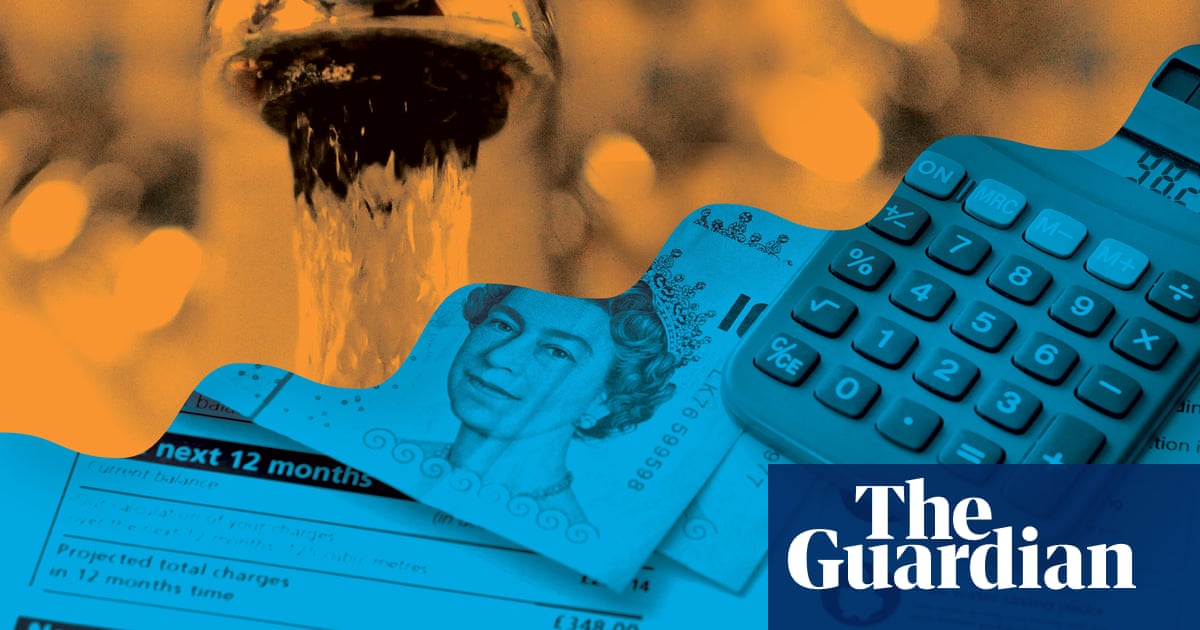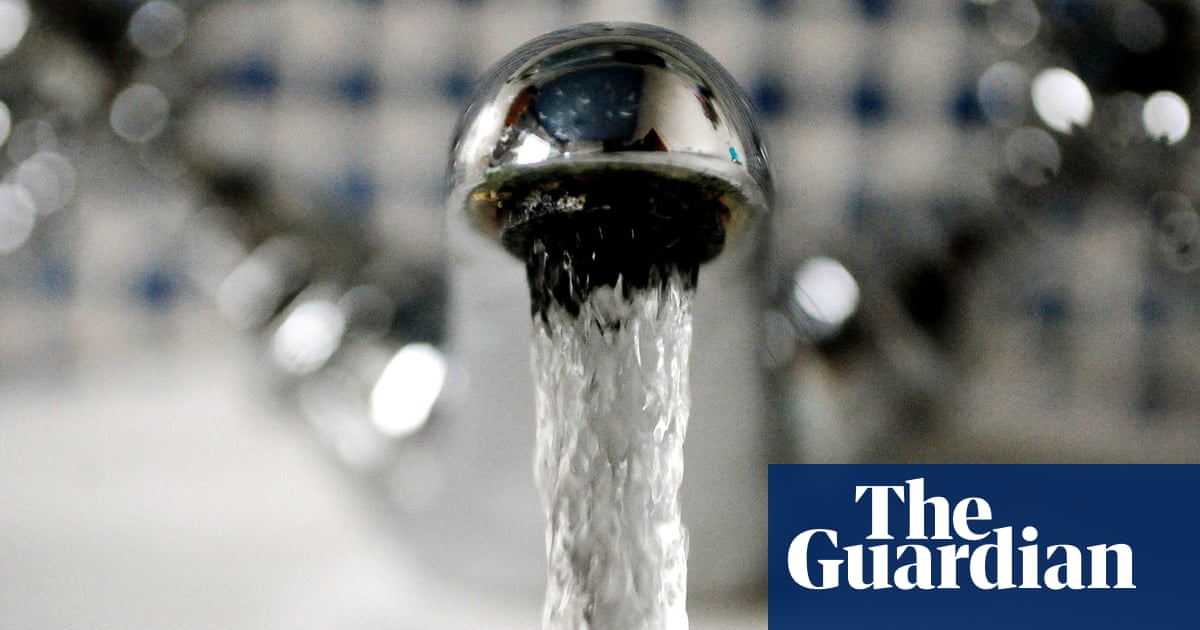
More than a quarter of water bills in London and parts of the south of England have been spent paying interest on the debt held by privatised water companies, the Guardian can reveal.
Guardian analysis of financial data for all 14 English water companies found the industry has paid close to 20p for every pound of revenue on servicing debt on average over the past five years. But the cost of interest and fees associated with debt soars for customers in the south-east. For three companies, Thames Water, Southern Water and South East Water, which provide water for 9.4 million households and businesses, the cost of servicing debt is more than a quarter of water bills.
In contrast, Scottish Water, which is publicly owned, spent just 10% of its revenues on financing debt in 2023. As of March, English water companies have run up combined debts of £60.3bn.
Customer bills make up at least 96% of water company revenue, according to Guardian analysis of company accounts for 2023.
Serious concerns have been raised about the financial viability of the UK’s biggest water company, Thames Water, which has debts of almost £15bn. Auditors have warned its parent company that it could run out of money by April if shareholders do not inject more cash. PricewaterhouseCoopers said there was “material uncertainty” about whether it could continue as a going concern.
At South East Water, which is under investigation by the regulator, Ofwat, for cutting off water supplies to customers, the cost of servicing its debt rose by £7.4m to £54.8m in the six months to 30 September, as inflation and higher interest rates bit.
Richard Murphy, a professor of accounting at Sheffield University management school said: “Water companies are simply becoming mechanisms to impose massive interest charges on ordinary people, when their job should be to supply water at the lowest possible cost for everyone.”
The industry is seeking permission from Ofwat to raise bills further to pay for a £96bn investment in fixing water leaks, stopping sewage discharges and building new reservoirs.
To calculate the cost of debt, the Guardian, in partnership with Dr Kate Bayliss of the department of economics at Soas University of London, analysed the net financial expenses of England’s 14 water companies, many of which also provide sewage connections.
The Guardian compared this with company revenues over a five-year period to find the percentage of revenue being spent on servicing debt.
The methodology was verified by independent experts, including Murphy.
Bayliss said much of the debt held by these companies related to borrowing during a time when inflation and interest rates were low.
“But now that circumstances have changed, the risks of this financing strategy are coming home to roost with an increasing share of revenue, which is almost all from customer bills,” she said.
“Companies are now seeking to increase bills, but a significant share of price increases could be directed to paying the costs of old debts rather than financing new investment.”
When English water companies were privatised in 1989 they were debt free, but by March 2023 the 14 companies were indebted by more than £60.3bn.
Over the same three decades, water companies have paid close to £53.1bn in shareholders’ dividends – more than £83.7bn in today’s prices, according to Guardian analysis of annual accounts published by water companies between 1989 and March 2023.
Water companies calculate the proportion of customers bills which go to pay the interest on debts in different ways. Some companies, including Anglian, disputed the Guardian’s methodology.
At Thames Water, the equivalent of 27.8% of revenue was spent servicing its £14.7bn debt pile on average over the last five years, according to the Guardian’s analysis. The company presents a different figure in its 2022-23 annual report, saying 3p in every pound from bills goes to lenders, a figure calculated from the cashflow statement.
A spokesperson for Thames Water said: “Customers’ charges are set according to Ofwat’s notional company and not versus its actual cost of debt. It is for the company to manage the revenues it receives, to cover operating costs as well as investment in the business, debt servicing and dividends.
“We are committed to maintaining our prudent financing strategy, which includes diversifying our sources of capital and pre-funding liquidity requirements.”
At Southern Water, according to the Guardian analysis, the cost of servicing £4bn debts amounted to an average of 26.8% of revenue. The company said its borrowings were “tightly regulated by Ofwat and in 2022-23, once adjusted for interest received and the effect of interest rate and hedges” the net interest paid was equivalent to 11% of revenue.
South East Water’s cost of servicing £1.2bn of debt was an average of 25.8% of revenues in the last five years. Its chief financial officer, Andrew Farmer, said the increase in servicing debt in recent years had been driven by inflation.
“The rise in inflation has affected numerous companies in a similar way, both in the water sector and in other industries where a proportion of index-linked debt is the norm,” Farmer said. “This does not have a material impact on the level of cash interest paid, and we remain confident that South East Water can continue to service its financial obligations.”
A Southern Water spokesperson said: “Just as homebuyers borrow to buy a home, through a mortgage rather than savings from household incomes, it would be entirely impractical and inefficient to try and fund investment to build new assets solely from revenue – customer bills would be far too high and unaffordable without this model of funding being used.”
Stanley Root, a former audit partner, with 29 years’ experience at one of the Big Four accountancy firms, disagreed with the mortgage comparison: “A house is a once- or twice-in-a-lifetime purchase for most people. They take out a mortgage because the cost of a house far exceeds their salary.
“Water companies take out loans every year … even when their annual income is more than enough to fund investment in building new assets. This is because they need to pay dividends to shareholders.”
A better analogy, he said, was “a person who is given a credit card with a big credit limit”, and chooses to pay a recurring cost like repairs from their card.
“They could pay for the regular annual repairs to their house out of their income […] but they pay for the repairs to their house with their credit card and use their income to pay for a luxury holiday in the Caribbean.”












